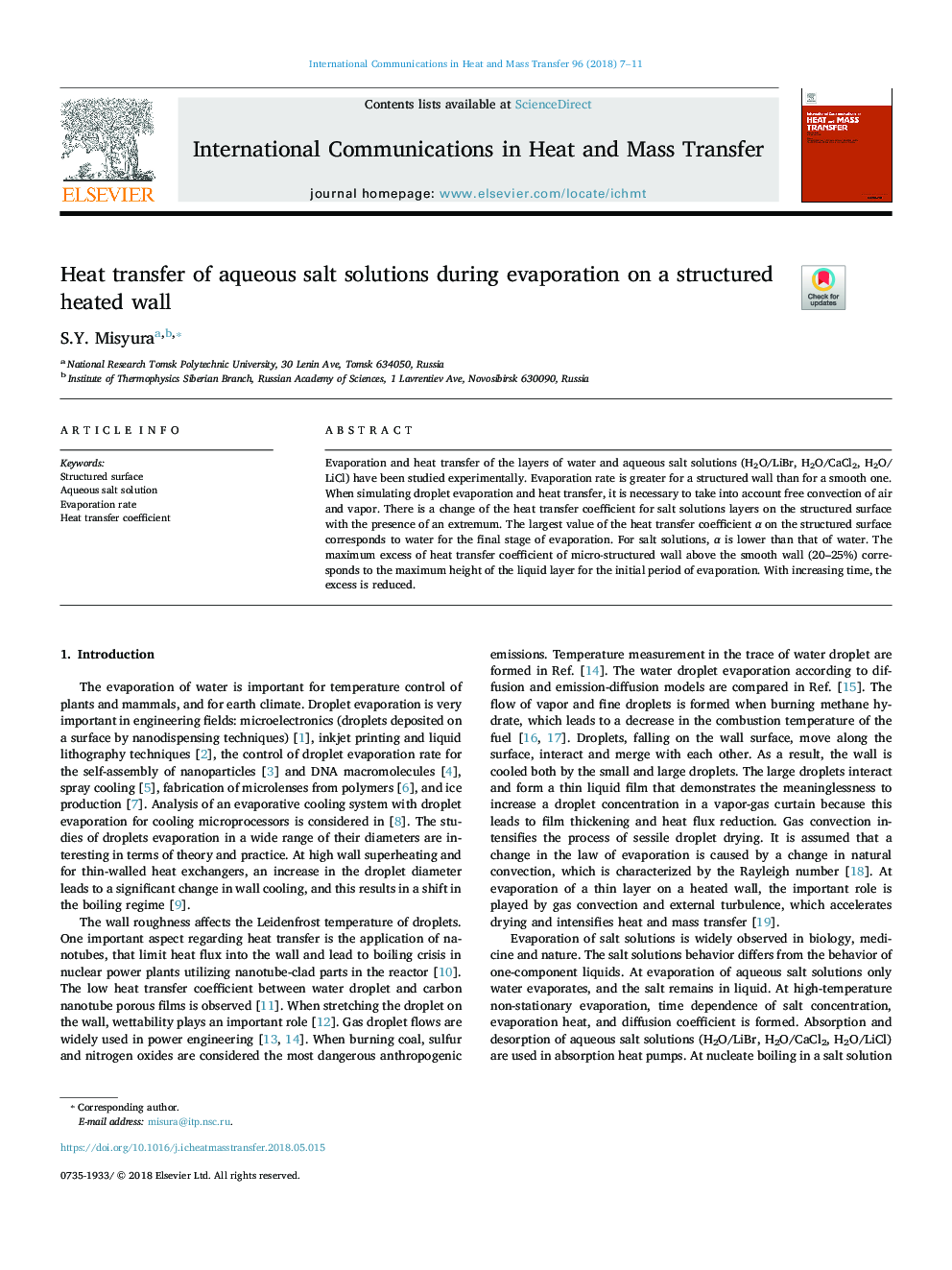| Article ID | Journal | Published Year | Pages | File Type |
|---|---|---|---|---|
| 7052753 | International Communications in Heat and Mass Transfer | 2018 | 5 Pages |
Abstract
Evaporation and heat transfer of the layers of water and aqueous salt solutions (H2O/LiBr, H2O/CaCl2, H2O/LiCl) have been studied experimentally. Evaporation rate is greater for a structured wall than for a smooth one. When simulating droplet evaporation and heat transfer, it is necessary to take into account free convection of air and vapor. There is a change of the heat transfer coefficient for salt solutions layers on the structured surface with the presence of an extremum. The largest value of the heat transfer coefficient α on the structured surface corresponds to water for the final stage of evaporation. For salt solutions, α is lower than that of water. The maximum excess of heat transfer coefficient of micro-structured wall above the smooth wall (20-25%) corresponds to the maximum height of the liquid layer for the initial period of evaporation. With increasing time, the excess is reduced.
Related Topics
Physical Sciences and Engineering
Chemical Engineering
Fluid Flow and Transfer Processes
Authors
S.Y. Misyura,
